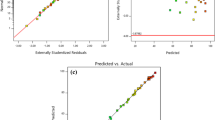Abstract
Classification of pores is one of the basic requisites of comprehensive characterization of porous solids. There are various categorizations of pores described in the literature, but it is difficult to give a consistent global classification of porous substances including catalysts, adsorbents, oxides, carbons, zeolites, organic polymers, soils etc. The purpose of each of these classifications is to organize pores in classes by grouping them on the basis of their common characteristics like structure, size, accessibility, shape etc. In this study, a summary of the most used classifications of porous materials is done. Some common properties or behavior for individual classifications could be found, but many differences mainly in pore size are still subject of intensive discussions. Therefore, it is the purpose of this review to provide a general description of the concept and classification of pores in porous solids, to deal with complexity of the matter and to organise our knowledge in decision-making proccesses of pore characteristics determination.
Similar content being viewed by others
References
D. Nicholson: “Using computer simulation to study the properties of molecules in micropores”, J. Chem. Soc., Faraday Trans, Vol. 92(1), (1996), pp. 1–9.
S. Komarneni, V.C. Menon, R. Pidugu, J. Goworek and W. Stefaniak: “Temperatureprogrammed desorption vs. N2 desorption in determining pore-size distribution of mesoporous silica molecular sieves”,J. Porous Mat., Vol. 3, (1996), pp. 115–119.
S.P. Rigby, R.S. Fletcher and S.N. Riley: “Characterisation of porous solids using integrated nitrogen sorption and mercury porosimetry”, Chem. Eng. Sci., Vol. 59, (2004), pp. 41–51.
D.H. Everett, IUPAC, Manual of Symbol and Terminology for Physicochemical Quantities and Units, Appendix, Definitions, Terminology and Symbols in Colloid and Surface Chemistry, Part I, Pure Appl. Chem., Vol. 31(4), (1972), p. 579.
M.M. Dubinin: “Micropore structures of charcoal adsorbents. 1. A general characterization of micro-and supermicropores in the fissure model”, Proc. Acad. Sci USSR, Vol. 8, (1979), pp. 1691–1696.
P.G. Cheremskoj: Metodi izsleddovania poresti tvurdi tel., Moskwa, Energoatomizdat, 1985 (in Russian).
K.K. Strelov and A.F. Bessonov: Pore Classification in Refractory Materials, Refractories and Industrial Ceramics, Vol. 4(9-10), Springer, New York, 1963, pp. 506–509.
K. Kaneko: “Determination of pore size and pore size distribution 1. Adsorbents and catalysts, Review”, J. Membrane Sci., Vol. 96, (1994), pp. 59–89.
J. Kodikara, S.L. Barbour and D.G. Fredlund: “Changes in clay structure and behaviour due to wetting and drying”, In: 8th Australian-New Zealand Conference on Geomechanics, Australian Geomechanics, Hobart, Australia, 1999, pp. 179–186.
International Union of Pure and Applied Chemistry Physical Chemistry Division Commission on Colloid and Surface Chemistry, Subcommittee on Characterization of Porous Solids: “Recommendations for the characterization of porous solids (Technical Report)”, Pure Appl. Chem., Vol. 66(8), (1994), pp. 1739–1758.
M. Ruike, T. Kasu, N. Setoyama, T. Suzuki and K. Kaneko: “Inaccessible pore characterization of less-crystaline microporous solids”, J. Phys. Chem., Vol. 98, (1994), pp. 9594–9600.
E. Boucher: “Porous Materials: Structure, Properties and capillary phenomena review”, J. Mater. Sci., Vol. 11, (1976), pp. 1734–1750.
B. Bindra, O.P. Jasuja and A.K. Singla: “Poroscopy: A Method of personal identification revisited”, Anil Aggrawal’s Internet J. Forensic Medic. Toxic., Vol. 1(1), (2000), http:www.geradts.comanilij/vol_001_no_001paper003.html.
M.M. Dubinin: “The potential theory of adsorption of gases and vapors for adsorbents with energetically nonuniform surfaces”, Chem. Rev., Vol. 60, (1960), pp. 235–241.
K.S.W. Sing, D.H. Everett, R.W. Haul, L. Moscou, R.A. Pierotti, J. Rouquerol and T. Siemieniewska: “Reporting physisorption data for gas/solid systems with special reference to the determination of surface area and porosity”, Pure Appl. Chem., Vol. 57, (1985), p. 603.
IUPAC Manual of symbols and terminology for physicochemical quantities and units, Butterworths, London, 1972.
K. Sakai: “Determination of pore size and pore size distribution, 2. Dialysis membranes, review”, J. Membrane Sci., Vol. 96, (1994), pp. 91–130.
T.G. Plachenov and S.D. Kolosencev: Porometria, Chimia, Leningrad, 1981.
M.G. Brown and D.A. Cadenhead: “A comparative porosity study of active carbons”, J. Colloid. Interf. Sci., Vol. 70(1), (1979), pp. 139–146.
K. Kaneko and C. Ishii: “Superhigh surface area determination of microporous solids”, Colloid. Surface., Vol. 67(9), (1992), pp. 203–212.
K. Kaneko, C. Ishii, M. Ruike and H. Kuwabara: “Origin of superhigh surface area and microcrystalline graphitic structures of activated carbons”, Carbon, Vol. 30(7), (1992), pp. 1075–1088.
Y. Shigeno, J.W. Evans and I. Yoh: “Infiltration of microporous activated charcoal by pyrolysis of CH4 and its effect on enhancementof resistance against oxidation”, ISIJ Int., Vol. 37(8), (1997), pp. 738–747.
J.E. Shields and S. Lowell: “Submicropore analysis, short communication”, Powder Technol., Vol. 41, (1985), pp. 269–271.
R.Z. Wang and Q.B. Wang: “Adsorption mechanism and improvements of the adsorption equation for adsorption refrigeration pairs”, Int. J. Energy Res., Vol. 23, (1999), pp. 887–898
C.T. Kresge, M.E. Leonowicz, W.J. Roth, J.C. Vartuli and J.S. Beck: “Ordered mesoporous molecular sieves synthesized by a liquid-crystal template mechanism”, Nature, Vol. 359, (1992), pp. 710–712.
Author information
Authors and Affiliations
Additional information
An erratum to this article is available at http://dx.doi.org/10.2478/s11532-007-0039-3.
About this article
Cite this article
Zdravkov, B.D., Čermák, J.J., Šefara, M. et al. Pore classification in the characterization of porous materials: A perspective. cent.eur.j.chem. 5, 385–395 (2007). https://doi.org/10.2478/s11532-007-0017-9
Received:
Accepted:
Published:
Issue Date:
DOI: https://doi.org/10.2478/s11532-007-0017-9




